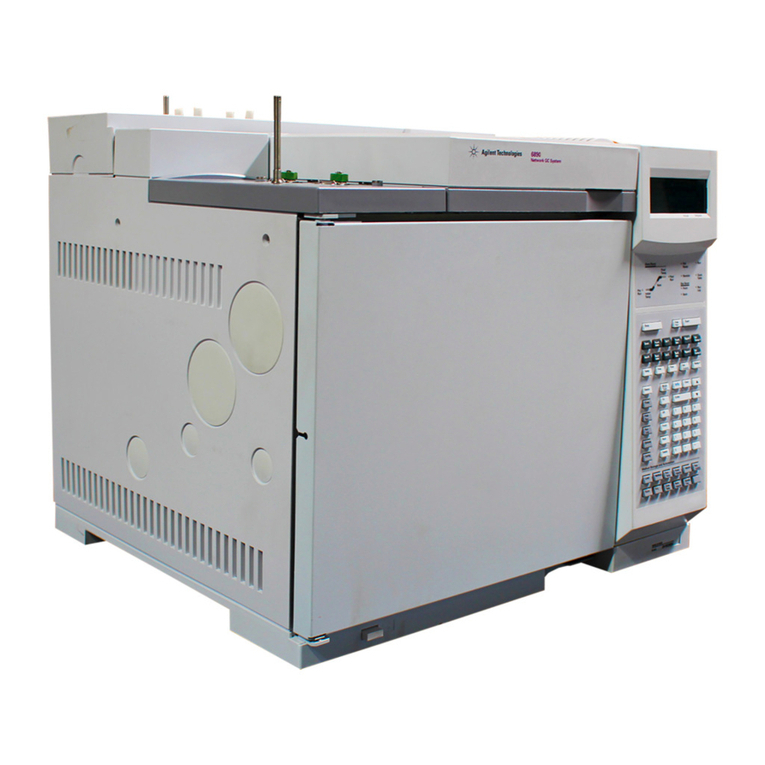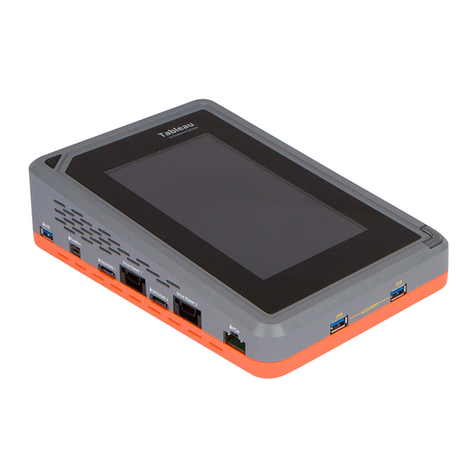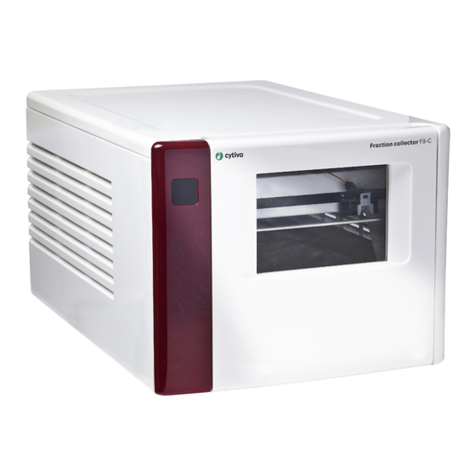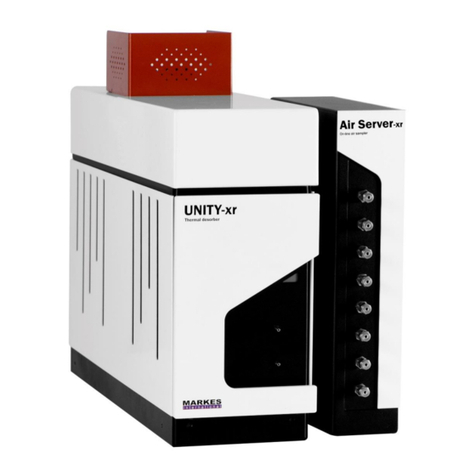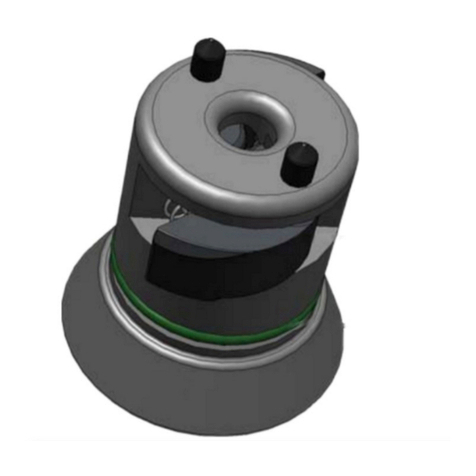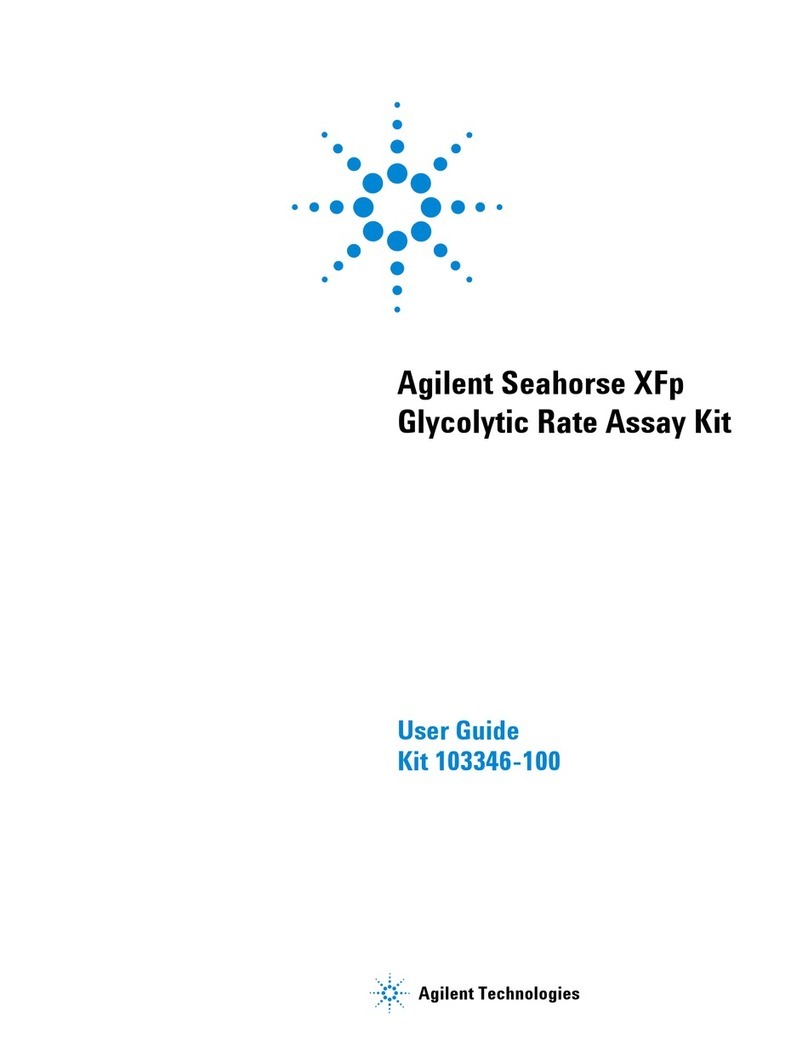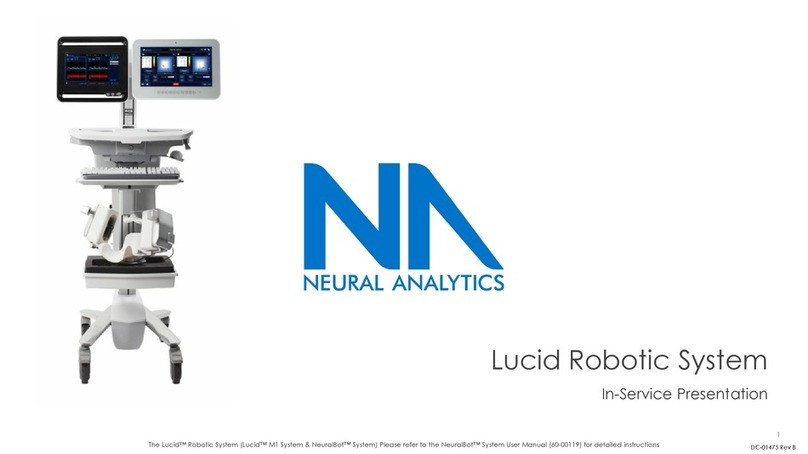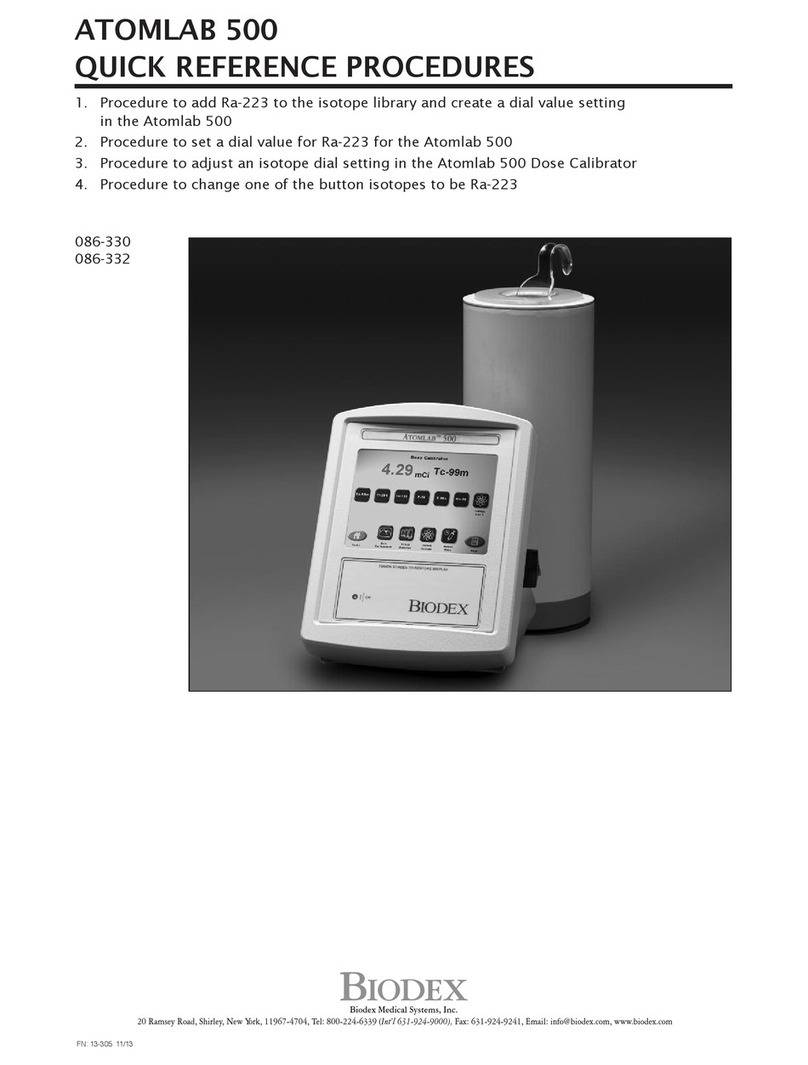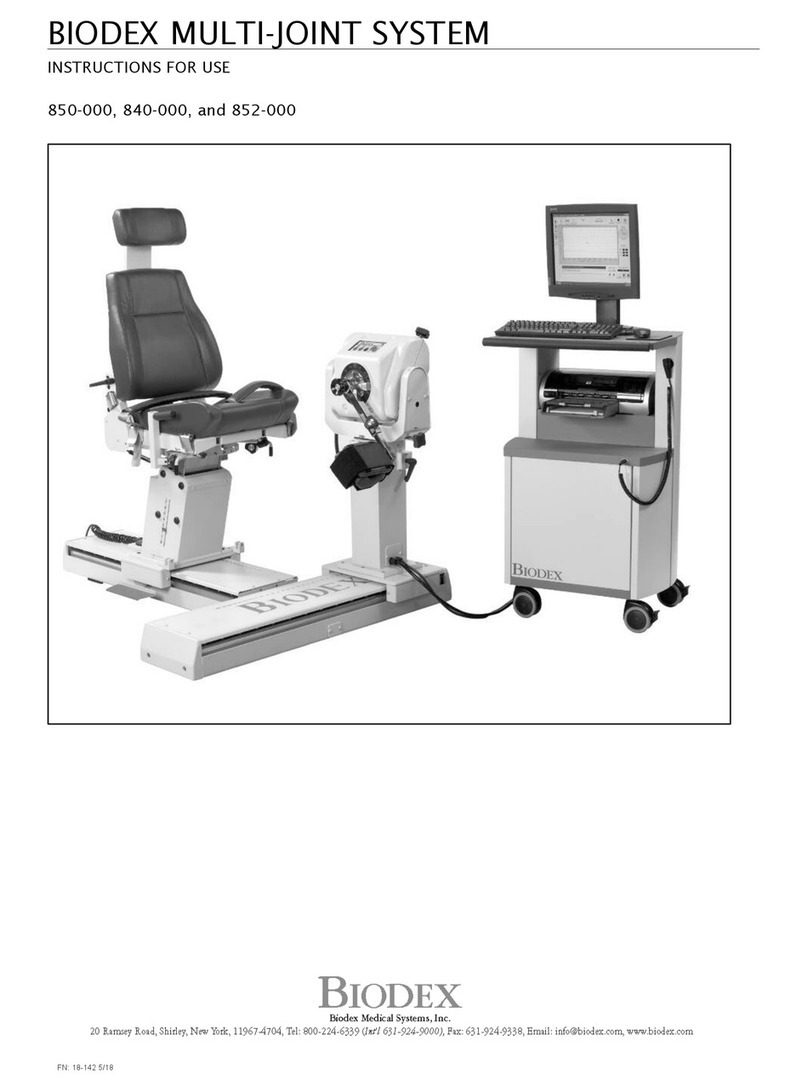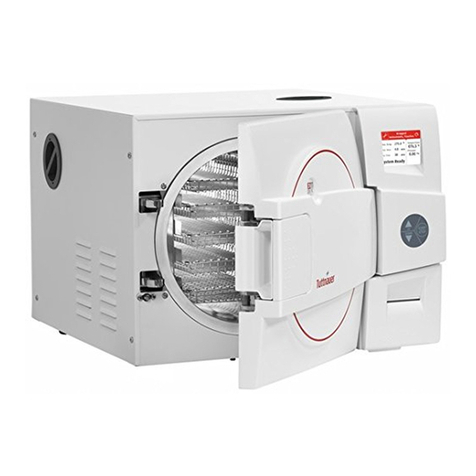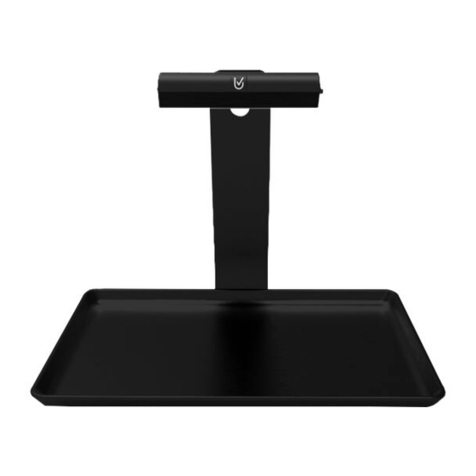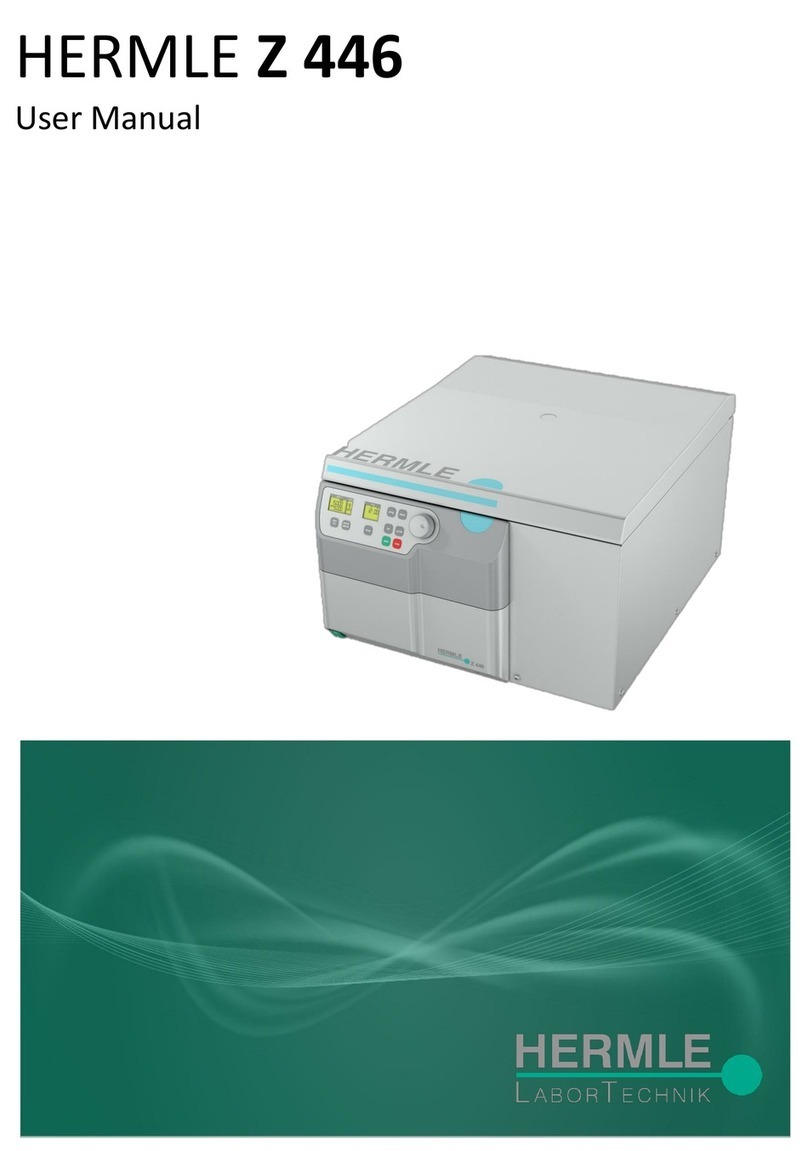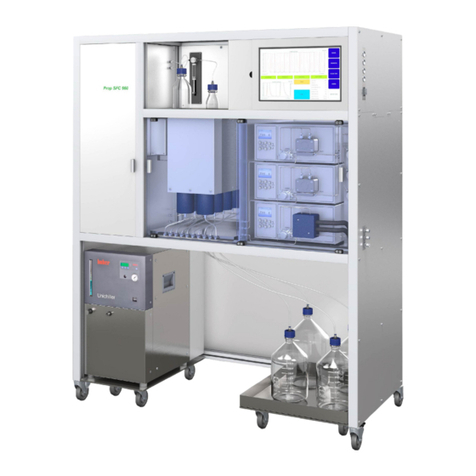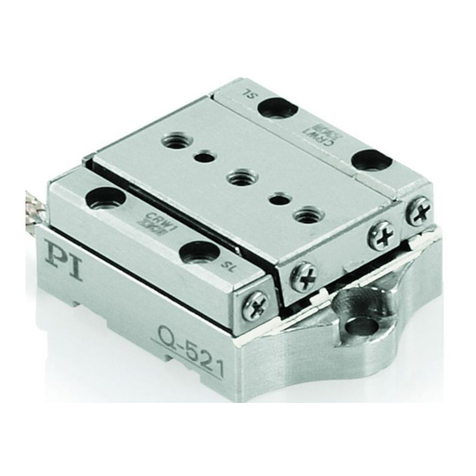Display Units
When the dose calibrator is set to display activity values in Ci (curies) as the system of units,
either µCi, mCi, or Ci will be indicated next to the numeric display. The prefix micro or µ (10-6),
or milli or m (10-3) or curies is automatically selected by the system's microprocessor. For
example, if the numeric value displayed is 12.03 and µCi is indicated, the activity will be
12.03x10-6 ci or 0.00001203 curies. If 63.9 is displayed and mCi indicated, the activity is
63.9x10-3 ci or 0.0639 curies.
In the same manner, when the dose calibrator is set to the international system of units,
Becquerels, either MBq or GBq will be indicated, where the prefix m represents Mega (106) and
G represents Giga (109). The absolute measurement range of the Atomlab Dose Calibrator is
from 0.01 µCi to 100.00 ci of Tc-99m or 25 curies of F-18 (and the equivalent in becquerels).
For example, 12.03 µCi = .445 MBq and 63.9 mCi = 2.36 GBq. If the numeric display reads
0.445 and MBq is indicated, the activity value is 445,000 becquerels. If 2.36 is displayed and
GBq indicated, the activity is 2,360,000,000 becquerels.
Routine Isotopes
The routine radioisotope (isotope selection) keys for the Atomlab 500 include: Tc-99m, TI-201,
I-123, I-131, Cs-137, Co-57, Xe-133, Ga-67, In-111, F-18, Y-90s, and Ba-133. The Co-57, Ba-133
and Cs-137 buttons are primarily used for accuracy and constancy tests.
Atomlab Dial Values
Equal activities of two different isotopes will generate different amounts of current in the ion
detector due to differences in the energy and particle emitted by the isotopes. Dial values are a
means of calibrating the source activity measured for an isotope due to these differences in
detector current. The amount of current that is produced by a Co-60 source is defined as a dial
value of 5.0; all other isotopes are defined relative to the Co-60 value. Co-60 was chosen as the
defining isotope due to its high energy photon emission and long half-life. The high energy
reduces the effect of container geometry (syringe, vial, etc.) and the long half-life ensures that a
single calibrated source can be used for many calibrations.
The dial value for certain isotopes have been directly measured using NIST calibrated sources
provided from the NIST standard reference materials program. These isotopes include Ga-67,
Y-90, Tc-99m, Mo-99, In-111, I-125, I-131, Xe-133, and TI-201. In addition the Cs-137 dial value
has also been measured directly using a NIST calibrated source. Using the measured detector
response for the isotopes listed above in conjunction with a Monte Carlo model of the ion
detector, detector response curves have been generated. Using information on photon, electron
and positron emission (from Table of Radioactive Isotopes, by Browne and Firestone, verified
with the Nuclear Data Center’s Nudat 2.2 Database), calculated dial values have been generated
for those isotopes for which direct measurement of the dial value was not possible.






















